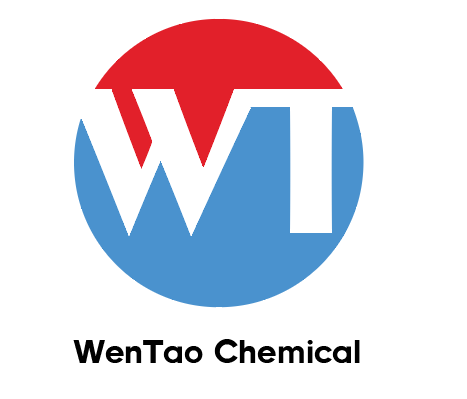Benzoyl chlorideCAS NO.: 98-88-4 CAS NO.98-88-4
- FOB Price: USD: 4.00-5.00 /Kilogram Get Latest Price
- Min.Order: 1 Kilogram
- Payment Terms: L/C,D/A,D/P,T/T,Other
- Available Specifications:
top grade (1-10)Kilogramtop grade (10-100)Kilogram
- Product Details
Keywords
- Benzoyl chloride
- alpha-chloro-benzaldehyd
- BENZOYL CHLORIDE
Quick Details
- ProName: Benzoyl chlorideCAS NO.: 98-88-4
- CasNo: 98-88-4
- Molecular Formula: C7H5ClO
- Appearance: colourless liquid
- Application: Catalyst and Auxiliary
- DeliveryTime: In stock
- PackAge: Aluminium Foil Bag and Paper Drum
- Port: China main port
- ProductionCapacity: 10000 Gram/Day
- Purity: 99%
- Storage: Room temperature
- Transportation: By sea or by air
- LimitNum: 1 Kilogram
- Grade: Industrial Grade,Food Grade,Pharma Gra...
- first class: 1-10
Superiority
Details
| Physical and Chemical Properties | Its pure product is a colorless and transparent flammable liquid, which is smoking exposed to air in the air. In Industry, it is slightly pale yellow, with a strong pungent odor. Its steam has a strong stimulating effect for eye mucous membranes, skin and respiratory tract, by stimulating the mucous membranes and eyes tear. Benzoyl chloride Melting point is-1.0 ℃, boiling point is 197.2 ℃, and the relative density is 1.212 (20 ℃), while a flash point is 72 ℃, and refractive index (n20) is 1.554. It is soluble in the ether, chloroform, benzene and carbon disulfide. It can gradually decomposed in water or ethanol, ammonia, which generates benzoic acid, generating benzamide, ethyl benzoate and hydrogen chloride. In the laboratory, it can be obtained by distillation of benzoic acid and phosphorus pentachloride under anhydrous conditions. Industrial production process can be obtained by the use of thionyl chloride benzaldehyde. Benzoyl chloride is an important intermediate for preparing dyes, perfumes, organic peroxides, resins and drugs. It is also used in photography and artificial tannin production, which was formerly used as an irritant gas in chemical warfare. |
| Application |
|
| Chemical Properties | Transparent, colorless liquid; pungent odor; vapor causes tears. Soluble in ether and carbon disulfide; decomposes in water. Combustible. |
| Chemical Properties | Benzoyl chloride is a colorless to slight brown liquid with a strong, penetrating odor. |
| Uses | Benzoyl Chloride is used in the manufacturing of dye intermediates. |
| Uses | For acylation, i.e., introduction of the benzoyl group into alcohols, phenols, and amines (Schotten-Baumann reaction); in the manufacture of benzoyl peroxide and of dye intermediates. In organic analysis for making benzoyl derivatives for identification purposes. |
| Definition | A liquid acyl chloride used as a benzoylating agent. |
| General Description | A colorless fuming liquid with a pungent odor. Flash point 162°F. Lachrymator, irritating to skin and eyes. Corrosive to metals and tissue. Density 10.2 lb / gal. Used in medicine and in the manufacture of other chemicals. |
| Reactivity Profile | Benzoyl chloride reacts violently with protic solvents such as alcohols, with amines and amides (for example dimethylformamide [Bretherick 1979 p. 6] ) and with inorganic bases. Causes the violent decomposition of dimethyl sulfoxide [Chem. Eng. News 35(9): 87 1957]. May react vigorously or explosively if mixed with diisopropyl ether or other ethers in the presence of trace amounts of metal salts [J. Haz. Mat., 1981, 4, 291]. Friedel-Crafts acylation of naphthalene using Benzoyl chloride, catalyzed by AlCl3, must be conducted above the melting point of the mixture, or the reaction may be violent [Clar, E. et al., Tetrahedron, 1974, 30, 3296]. |
| Hazard | Highly toxic. Strong irritant to skin, eyes, and mucous membranes, and via ingestion, inhala- tion. Upper respiratory tract irritant. Probable car- cinogen. |
| Health Hazard | INHALATION: may irritate eyes, nose and throat. INGESTION: causes acute discomfort. SKIN: causes irritation and burning. |
| Chemical Reactivity | Reactivity with Water Slow reaction with water to produce hydrochloric acid fumes. The reaction is more rapid with steam; Reactivity with Common Materials: Slow corrosion of metals but no immediate danger; Stability During Transport: Not pertinent; Neutralizing Agents for Acids and Caustics: Soda ash and water, lime; Polymerization: Does not occur; Inhibitor of Polymerization: Not pertinent. |
| Potential Exposure | Benzoyl chloride is used as a chemical intermediate; in organic synthesis; to produce other chemicals, dyes, perfumes, herbicides, and medicines. |
| Shipping | UN 1736 Benzoylchloride, Hazard class: 8; Labels: 8—Corrosive material. |
| Purification Methods | A solution of benzoyl chloride (300mL) in *C6H6 (200mL) is washed with two 100mL portions of cold 5% NaHCO3 solution, separated, dried with CaCl2 and distilled [Oakwood & Weisgerber Org Synth III 113 1955]. Repeated fractional distillation at 4mm Hg through a glass helices-packed column (avoiding porous porcelain or silicon-carbide boiling chips, and hydrocarbon or silicon greases on the ground joints) gave benzoyl chloride that did not darken on addition of AlCl3. Further purification is achieved by adding 3 mole% each of AlCl3 and toluene, standing overnight, and distilling off the benzoyl chloride at 1-2mm [Brown & Jenzen J Am Chem Soc 80 2291 1958]. Refluxing for 2hours with an equal weight of thionyl chloride before distillation has also been used. [Beilstein 9 IV 721.] Strong IRRITANT. Use in a fume cupboard. |
| Incompatibilities | May form explosive mixture with air. Contact with heat, hot surfaces, and flames causes decomposition, forming phosgene and hydrogen chloride. Water contact may be violent; forms hydrochloric acid. Reactions with amines, alcohols, alkali metals, dimethyl sulfoxide, strong oxidizers, and metal salts may be violent, causing fire and explosions. Attacks metals in the presence of moisture, forming explosive hydrogen gas. Attacks some plastics, rubber or coatings. |
| Waste Disposal | Pour into sodium bicarbonate solution and flush to sewer. |


 Diamondsupplier
Diamondsupplier 



